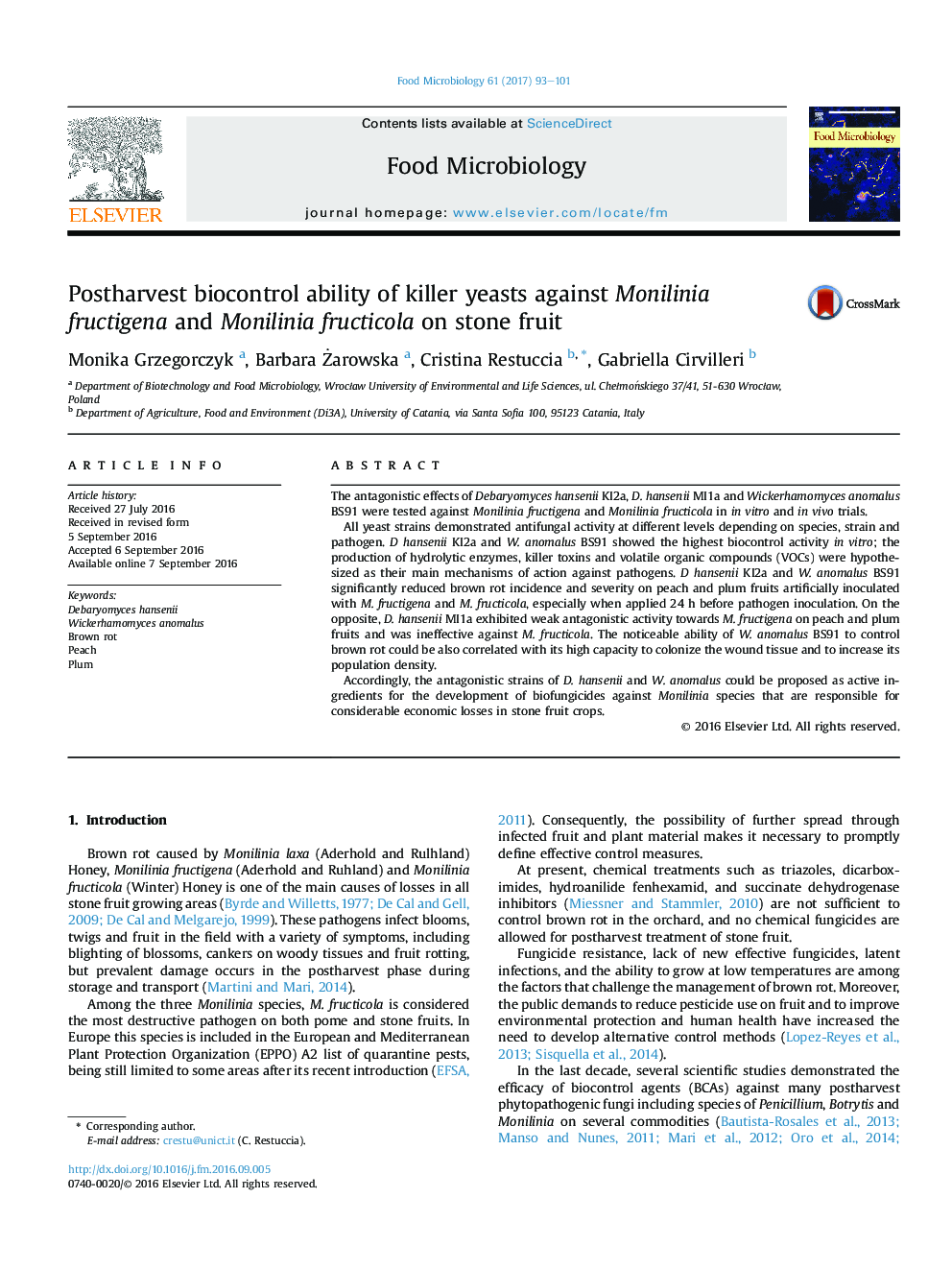| Article ID | Journal | Published Year | Pages | File Type |
|---|---|---|---|---|
| 4362556 | Food Microbiology | 2017 | 9 Pages |
•Brown rot caused by Monilinia spp. is one of the main causes of stone fruit losses.•Killer D. hansenii KI2a and W. anomalus BS91 inhibited in vitro Monilinia spp.•The selected yeast strains effectively managed postharvest rot in peach and plum.
The antagonistic effects of Debaryomyces hansenii KI2a, D. hansenii MI1a and Wickerhamomyces anomalus BS91 were tested against Monilinia fructigena and Monilinia fructicola in in vitro and in vivo trials.All yeast strains demonstrated antifungal activity at different levels depending on species, strain and pathogen. D hansenii KI2a and W. anomalus BS91 showed the highest biocontrol activity in vitro; the production of hydrolytic enzymes, killer toxins and volatile organic compounds (VOCs) were hypothesized as their main mechanisms of action against pathogens. D hansenii KI2a and W. anomalus BS91 significantly reduced brown rot incidence and severity on peach and plum fruits artificially inoculated with M. fructigena and M. fructicola, especially when applied 24 h before pathogen inoculation. On the opposite, D. hansenii MI1a exhibited weak antagonistic activity towards M. fructigena on peach and plum fruits and was ineffective against M. fructicola. The noticeable ability of W. anomalus BS91 to control brown rot could be also correlated with its high capacity to colonize the wound tissue and to increase its population density.Accordingly, the antagonistic strains of D. hansenii and W. anomalus could be proposed as active ingredients for the development of biofungicides against Monilinia species that are responsible for considerable economic losses in stone fruit crops.
